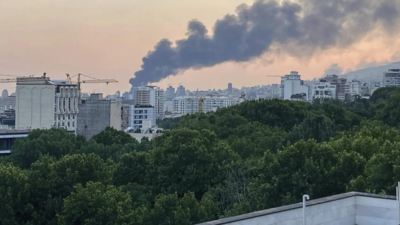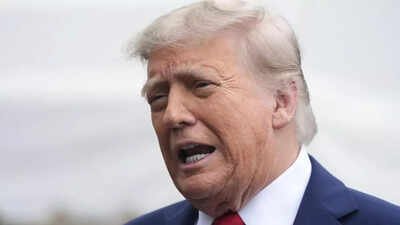
Pakistan’s recent decision to increase its defence budget by 17% for the fiscal year 2025–2026 is as revealing as it is alarming. At a time when the country faces an economic abyss, burdened by US$274 billion in external debt and a poverty rate exceeding 45%, this underscores the persistent dominance of the military over both state priorities and democratic aspirations.
Pakistan’s economy is in the doldrums. It is sustaining itself on the bailout packages from the International Monetary Fund (IMF). It has recently received a commitment of US$ 1.4 billion as part of its climate resilience funds. The Asian Development Bank has agreed to provide a US$ 800 million loan. Of course, Pakistan has reduced development outlay by 50% and the overall budget by 6.9%. While it is expected to divert the funds made available from different sources, these alone cannot meet the steep rise in the defence budget.
The official defence allocation, pegged at US$ 9.05 billion or 14.5% of the national budget, does not tell the full story. It excludes military pensions (US$2.6 billion), nuclear program costs, and various hidden expenditures buried under strategic programs. In truth, Pakistan’s defence spending is significantly higher than acknowledged, and history has shown that the actual expenditure consistently exceeds the initial budget estimates. Pakistan also receives military weapons and assistance from China at highly concessional rates in return for political concessions.
Crucially, China’s interests have been kept in view while curtailing development projects. The Diamer-Bhasha Dam in Gilgit-Baluchistan and highway construction in Baluchistan have not been touched. These are driven by strategic considerations. The former is a China assisted project that will ensure an enhanced Chinese presence in PoK, which will help Pakistan in internationalising the Kashmir issue. The highway construction in Baluchistan will strengthen the Pak Army’s hold in the province which is challenging the Pak Establishment.
Pakistan has also manipulated its budget figures to underline that the deficit is not wide. While the last budget was predicated upon a GDP growth rate of 3.2%, its actual growth rate was much lower at about 2.6%. This year it shows an expected growth rate of 4.2%, which is not possible. However, higher projections are aimed at minimising the deficit. This is an exercise based on mendacity to woo external powers to continue to give loans and assistance.
Pakistan is seeking a rollover of around $12 billion in debt from key allies such as China to meet a whopping $23 billion worth of gap in its external financing. China remains its biggest external financier and key military partner. It is expected that China will aid rollover of the debt payments. Nearly a third of Pakistan’s total external debt is owed to China, much of it tied to infrastructure and energy projects under CPEC.
In addition, Saudi Arabia and the UAE have also assisted Pakistan. In July 2023, Saudi Arabia deposited $2 billion into Pakistan’s central bank, and the UAE added $1 billion, significantly bolstering foreign reserves ahead of crucial IMF board decisions. Recently, the UAE rolled over another $2 billion in January 2024 and again in early 2025. In December 2024, Saudi Arabia extended its $3 billion deposit for another year. Turkey is also providing military support to Pakistan. Reports indicate that Turkey has supplied drones and potentially other military equipment to Pakistan. There are also reports of Turkish military advisors and drone operators assisting Pakistan.
There are reports that the US may also aid Pakistan, which like earlier periods, project itself as a moderate Muslim state willing to help the US deal with terrorists of ISIS and Al Qaeda. The US administration changed its 2018 view when Pakistan was accused of harbouring terrorists and stopped US $ 1.3 billion aid. Recently, the US Central Command (Centcom) commander, General Michael Kurilla, who recently praised Pakistan as a “phenomenal partner” in counter-terrorism during a congressional hearing. He gave instances of the Pak Army capturing a few terrorists of ISIS. Besides, the US has economic interests now in supporting Pakistan. Munir was invited to attend the 250th Anniversary of the US Army, indicating that his support to various global terrorists does not matter.
In essence, there are three implications. First, the external support will help Munir to consolidate his position internally at a crucial time when the Pak Army is facing challenges from the TTP, Imran’s party and the Baluchistan insurgency. Internally, the democratic forces will be under greater pressure from the Pak Army.
Second, under Munir, Pakistan will continue to pursue distorted priorities. Munir has a strong belief in jihad according to Lt Gen Ahmed Sharif Chaudhry. He had articulated his approach of anti-Hindu and anti-India. Since terrorism has not been opposed by Pakistan’s friends, Munir may feel encouraged to continue to use terrorists against India.
Third, Pakistan’s foreign dependence will increase significantly. Pakistan is outsourcing its economic survival for military ambitions. China’s influence over Pakistan is deepening – militarily, economically, and politically – turning Pakistan into a strategic pawn in Beijing’s regional ambitions. China will be able to manipulate Pakistan further in its strategic interests, which will have serious implications for India. The possibilities of Pakistan allowing bases to foreign armed forces have increased.
Pakistan’s defence budget surge is not an isolated financial event-it is a strategic signal. It reveals a state that chooses guns over bread, coercion over consensus, and dependence over reform. For India and the broader international community, ignoring this trend would be a costly miscalculation.
India’s measured approach to exposing Pakistan’s terror links on global forums is commendable, but it must now evolve into a broader grand strategy. This should include closer coordination with allies, investments in counter-terror capabilities, and a proactive diplomatic offensive to hold Pakistan accountable for its duplicity.
Disclaimer
Views expressed above are the author’s own.
END OF ARTICLE






